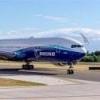- Viewing Profile: Topics: tarheel668
tarheel668
tarheel668
Member Since 02 Jul 2012Offline Last Active May 28 2013 12:10 AM
Community Stats
- Group Member
- Active Posts 4
- Profile Views 2,831
- Member Title New Member
- Age Age Unknown
- Birthday Birthday Unknown
User Tools
Latest Visitors
Understanding the Numbers
14 July 2012 - 12:00 AM
One goal of mine is to get the best value possible for each route. That means I want the best plane, on each route.
To do all this I am trying to understand/breakdown the numbers for one flight.
Please help me with your knowledge
LHR-CDG (216 miles)
First Stop "Market Research Page" - Daily Numbers
How many days are in a Week? I know the answer is seven but not according to my "Market Research" Page. It shows the below.
1 First Class @ $190
11 Business @179
57 Economy @ 80
Daily Profit is $6429
Second Stop "Flight List" - Total Numbers for the ONE flight I have on this route (747-200B). Flight operates one time per week.
Revenue (A seven day week would have different numbers)
6/8 F
80/80 C
401/402 Y
Total Ticket Sales $93340
Expenses
FC - $118
CC - $234
GC - Nothing Provided
IFS - 0
Fuel - $16988
Landing Fees - $14606
Other Taxes and Fees - $17042
R/T Profit $44,420
This leads to several questions
1) The Ticket Sales are off - One round trip flight numbers using daily PAX count from "Flight List"
12 F @ $190 is $2,280
160 C @179 is $28,640
804 Y @ 80 is $64,320
Total $95,240 NOT $93,340 as stated on the page (What am I missing?)
2) If there was one F per day and seven days in a week I would have 14 F PAX not 12 assuming a 100% load factor which I have on the route.
3) On the "Route Finance" page I see a ground crew cost of $16 per day which would be $32 for the one flight. That won't make a difference on the numbers above but is not reflected.
4) I have 17 flights weekly going from various UK airports into CDG yet their total landing fees do not add up to the monthly gate fee I am charged. Logic would say that gate fees and landing fees are different costs and are broken down as such in "Airline Finance".
What would be helpful would be to see that because I am only using 17 of 50 slots in CDG, my $609,222 monthly gate cost is adding $84,522.58 to the cost of each flight, plus landing fees, plus taxes and fee. That total number is $726,580 spread across the 17 flights. To have the gate number reflected on the "Flight List" page would show that most of my flights are barely making money and that I need to restrict flights, raise prices or just drop the route.
LHR 1 RT Weekly - $ 14,606
CVT 6 RT Weekly - $10,080
SEN 7 RT Weekly - $11,676
LTN 3 RT Weekly - $12,324
Total $48,686 in Landing Fees
Total $68,672 in Other Fees and taxes
5) How much does fuel cost? A really important calculation would be some sort of MPG so I could guage what plane is best for the route. The Aircraft information page has "fuel flow" but I don't know how to use that. I look at the "Flight List" page, see that for the above example I have a cost of $16,988 which divided by miles would equal 78.64. But what does that mean and how do I use it. A 737-200 Adv has a fuel cost of only $3,162 but only gets 25% of the PAX from place to place. 4X would only be $12,648 but I would also have 4X the landing and other fees.
It seems like it would be easy to wrap yourself around the axle here.
So, in conclusion, I still would like to understand the numbers more so my flights, routes and hubs are sharp. I would also like to understand a calculation that puts the best plane on each route.
Any help would be appreciated.
Thanks
List Price vs. Actual Price - Article in today's WSJ
10 July 2012 - 01:52 AM
How much does a new airliner really cost?
When Airbus and Boeing Co. BA +0.46% announce orders at the Farnborough International Airshow this week, they will value the deals based on the planes' catalog prices—which no one pays. Airline executives, when pressed for details, will probably say they got "a great deal." But actual terms will remain guarded like nuclear launch codes.
More in Aviation and Aerospace
The aviation industry's code of silence on pricing is notable in this era of information overload. Thousands of people world-wide are involved in airplane purchases, yet few numbers spill out. That yields much mystery and speculation.
"The whole model is wacky," says Robert Milton, chairman of Air Canada parent Ace Aviation Holdings Inc., ACE.T +1.85% who says he approximates the real price of announced multibillion-dollar orders by cutting the stated value in half.
Manufacturers acknowledge haggling, and recently have traded accusations of starting a price war. Even in sales that aren't hotly contested, customers placing big orders get lower prices, as do early buyers of new models.
"Discounts do vary, primarily based on volume," says John Leahy, chief operating officer for customers at the Airbus unit of European Aeronautic Defence & Space Co.EAD.FR +1.59% Mr. Leahy declined to specify the variation or to discuss prices of specific deals.
Enlarge Image


Boeing's vice president for airplane marketing, Randy Tinseth, says "there are many levers you can pull" in a contract. He wouldn't discuss details.
But there are ways to estimate the range of discounts. An analysis of public data by The Wall Street Journal and interviews with numerous industry officials yielded this: Discounts seem to vary between roughly 20% and 60%, with an average around 45%. Savvy buyers don't pay more than half the sticker price, industry veterans say. But deal specifics differ greatly.
Heavy ReadingPart of the reason prices vary so much and are hard to pin down is that airplane contracts are complex. The documents can run to hundreds of pages, with sections covering structures, engines, cabin interiors, spare parts, operating performance and training. And just as airlines can make cheap tickets expensive with lots of additional fees, a jetliner that starts out looking like a bargain may quickly cost more when extras such as onboard equipment get added to the tab, further clouding the actual price.
Airlines also generally order lots of planes at once, for delivery over many years. So the real price of each plane in a single order can differ significantly due to inflation. The adjustments to account for this, known as escalation formulas, can erase much of an initial discount in just a few years, airline executives say.
One reason for the secrecy surrounding all this, say industry officials, is psychology: Less-experienced plane buyers like to think they got a bargain and don't want to be embarrassed if they overpaid. The safest approach then is silence. More-seasoned plane buyers also know that bragging about discount specifics would anger Airbus, Boeing or other producers and hurt the chances of striking a sweetheart deal again.
Hints Are DroppedHowever divorced from reality catalog prices are, they do have some uses. One is marketing.
"The list price enables the manufacturers to have large, splashy headlines about the size of the deals they're doing," says Gary Liebowitz, an analyst at the Wells Fargo Securities unit of Wells Fargo & Co.
Published prices also are the basis for the progress payments plane buyers fork over as a plane is being built, Mr. Liebowitz notes. Higher list prices mean bigger deposits.
As for actual prices, airlines occasionally let numbers slip, either because of disclosure requirements or loose tongues.
Southwest Airlines Co., LUV -0.32% for example, recently published numbers related to its new order for Boeing 737 Max jetliners in a government filing. Mr. Liebowitz of Wells Fargo crunched the data and estimated an actual base price of roughly $35 million per plane, or a discount of around 64%. He noted that Southwest is one of Boeing's best customers and that early buyers of new models get preferential pricing. A Southwest spokeswoman declined to comment.
Air India, in seeking funding last year for seven Boeing 787 Dreamliners it expects to receive this year, cited an average "net cost" of about $110 million per plane. The current list price is roughly $194 million, suggesting a 43% discount. Air India didn't respond to a request for comment for this article.
In March 2011, Russian flag carrier Aeroflot mentioned in a securities filing that it would pay at most $1.16 billion for eight Boeing 777s, which at the time represented a discount of 47%. Company representatives at the time said they had no details of the deal.
A senior Thai Airways International official was widely quoted in 2007 as saying the state-owned carrier had received discounts on Airbus A330 aircraft amounting to roughly 50%. A Thai Airways spokeswoman declined to comment on airplane pricing for this article.
Smaller price cuts have been reported for some other airlines. Biman Bangladesh Airlines in 2008 ordered Boeing 777s and 787s at prices cited by the national news agency representing discounts of between 20% and 33%. Biman didn't respond to a request for comment for this article.
Other hints can be gleaned from information Boeing makes public. Each year the manufacturer publishes the contracted value of its order backlog. Separately, it lists the planes in its backlog and their catalog prices. Crunching all these numbers yields an average discount over recent years of about 45%.
Two decades ago, discounts were just a few percent, say industry old-timers. The widening gap points to an unspoken dynamic in jetliner pricing: Plane makers regularly raise their catalog prices and airlines continually bargain those prices down. As a result, actual prices for popular models have barely budged in years, say insiders. Assuming that trend continues, one aspect of airliner pricing looks clear: Discounts will keep growing.
Hub vs. Terminal
07 July 2012 - 04:39 PM
I need a bit of help on understand the "Why" of both.
If I build a terminal I can offset the cost by leasing gates. I understand that. Are there any other benefits?
If I build a hub, I am not quite sure of the benefits.
Any help would be appreciated
- Viewing Profile: Topics: tarheel668

 Sign In
Sign In Create Account
Create Account
 Find content
Find content




